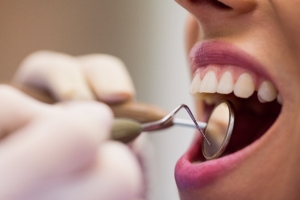Dealing with missing teeth can be a frustrating and self-conscious experience. Not only can it impact your ability to chew and speak comfortably, but it can also affect the overall appearance of your smile. Fortunately, there are several restorative options available to address this issue, one of which is a dental bridge. In this comprehensive article, we'll explore what dental bridges are, how they work, and whether they might be the right solution for your oral health needs.
Understanding Dental Bridges
A dental bridge is a prosthetic device that is used to replace one or more missing teeth. It consists of one or more artificial teeth, known as pontics, that are anchored in place by surrounding natural teeth or dental implants. The pontics are made to look and function like your natural teeth, seamlessly blending in with the rest of your smile.
Dental bridges come in several different types, each with its own unique advantages and considerations:
-
Traditional Fixed Bridges: This is the most common type of dental bridge. It consists of one or more pontics that are anchored in place by crowns on the adjacent teeth, known as abutment teeth.
-
Cantilever Bridges: These bridges are used when there is only one remaining natural tooth adjacent to the missing tooth. The pontic is anchored to the single abutment tooth.
-
Maryland Bridges: Also known as resin-bonded bridges, these are a more conservative option that use a metal or porcelain framework bonded to the back of the abutment teeth, rather than using crowns.
-
Implant-Supported Bridges: In this case, the pontics are supported by dental implants rather than natural abutment teeth. This can be a more stable and long-lasting solution, especially when multiple teeth are missing.
The Benefits of Dental Bridges
Dental bridges offer a range of benefits for those dealing with missing teeth. Some of the key advantages include:
-
Restored Functionality: Bridges help to restore the full functionality of your bite, allowing you to chew and speak with ease.
-
Improved Appearance: Bridges can seamlessly blend in with your natural teeth, providing a natural-looking and aesthetically pleasing solution for missing teeth.
-
Maintenance of Facial Structure: Missing teeth can cause the surrounding teeth to shift and the facial structure to change over time. Bridges help to prevent this, maintaining the integrity of your smile and facial features.
-
Reduced Risk of Dental Problems: Leaving gaps from missing teeth can increase the risk of dental issues like tooth decay, gum disease, and TMJ problems. Bridges help to fill these gaps and reduce these risks.
-
Long-Lasting Solution: When properly cared for, dental bridges can last for many years, providing a durable and reliable solution for missing teeth.
Determining if You Need a Dental Bridge
So, how do you know if a dental bridge is the right solution for you? Here are some key factors to consider:
-
Number of Missing Teeth: Bridges are typically recommended for replacing one or more missing teeth, as long as there are healthy natural teeth on either side to serve as abutments.
-
Condition of Surrounding Teeth: The abutment teeth need to be strong and healthy enough to support the bridge. If they have extensive decay or damage, alternative solutions like dental implants may be a better option.
-
Overall Oral Health: Your overall oral health, including the health of your gums and jawbone, will be evaluated to ensure that you are a good candidate for a dental bridge.
-
Your Personal Preferences: Ultimately, the decision to get a dental bridge should be made in collaboration with your dentist, taking into account your personal preferences, budget, and long-term goals for your oral health.
The Dental Bridge Procedure
If you and your dentist determine that a dental bridge is the best solution for your needs, the process typically involves the following steps:
-
Preparation of the Abutment Teeth: The dentist will need to prepare the abutment teeth by removing a small amount of enamel to make room for the crowns that will support the bridge.
-
Impression and Shade Selection: Your dentist will take impressions of your teeth and select the appropriate shade to ensure a natural-looking match with your existing teeth.
-
Fabrication of the Bridge: The impressions and shade information will be sent to a dental laboratory, where the bridge will be custom-made to fit your mouth.
-
Placement of the Bridge: Once the bridge is ready, your dentist will carefully place it in your mouth, ensuring a comfortable and secure fit.
-
Adjustment and Polishing: The dentist may need to make minor adjustments to the bridge to ensure a proper bite and comfortable fit. They will also polish the bridge to give it a natural, lustrous appearance.
Throughout the process, your dentist will work closely with you to ensure that the final result meets your expectations and provides a functional and aesthetically pleasing solution for your missing teeth.
Caring for Your Dental Bridge
Maintaining the health and longevity of your dental bridge is essential. Here are some tips for proper care:
-
Brush and Floss Regularly: Brushing and flossing around the bridge is crucial to prevent the buildup of plaque and the development of tooth decay or gum disease.
-
Use a Soft-Bristled Toothbrush: Avoid using a hard-bristled toothbrush, which can wear down the materials in your bridge over time.
-
Avoid Hard or Sticky Foods: Certain foods and candies can put excessive pressure on the bridge or cause it to loosen. It's best to steer clear of these types of items.
-
Schedule Regular Dental Checkups: Regular visits with your dentist are essential for monitoring the condition of your bridge and addressing any issues that may arise.
By following these best practices, you can help ensure the long-term success and comfort of your dental bridge.
Conclusion
Dental bridges can be a highly effective solution for replacing missing teeth and restoring the function and appearance of your smile. By understanding the different types of bridges, the benefits they offer, and the process of getting one, you can make an informed decision about whether a dental bridge is the right choice for your oral health needs. Remember to work closely with a skilled and experienced dentist to ensure the best possible outcome for your dental bridge treatment.





